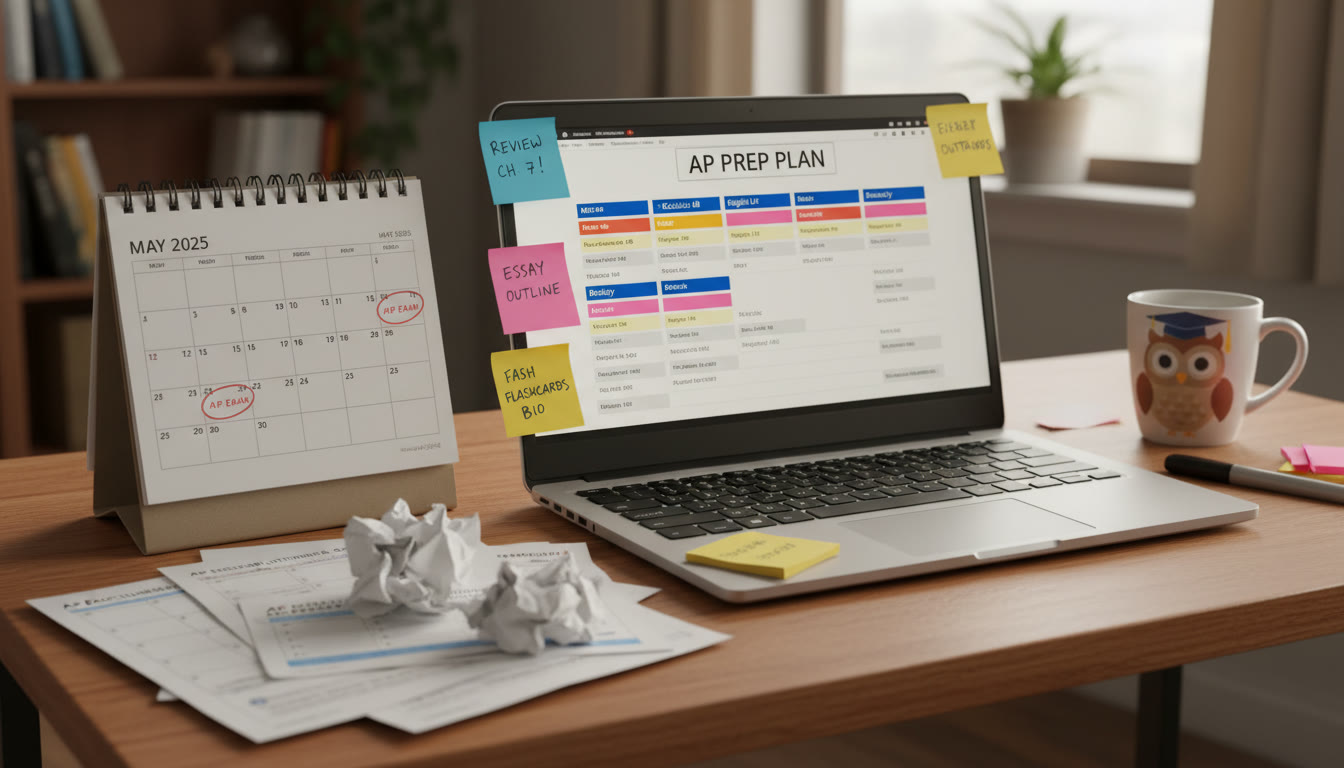Why AP Still Matters at Pomona and the 5Cs
If you’re part of the Claremont Colleges cluster — Pomona, Scripps, Claremont McKenna, Harvey Mudd, Pitzer — you already know you’re in a place where curiosity meets rigor. Advanced Placement (AP) courses and exams remain a common thread in application conversations, transcripts, and first-year placement. But AP isn’t a one-size-fits-all scoreboard; it’s a tool. Used thoughtfully, AP can show academic preparation, intellectual curiosity, and readiness for a selective liberal arts environment like Pomona and its partner campuses.

What AP communicates to selective liberal arts colleges
Admissions readers see more than a number when they glance at AP courses and scores. They look for patterns: did a student take a challenging course load relative to their opportunities? Are there intellectual passions visible across subjects (e.g., multiple science APs paired with math and English)? Have AP exams been used to build depth or breadth? For students at the 5Cs, a strategic AP plan can strengthen an application without turning high school into a relentless grind.
Map Your AP Strategy: Goals, Timeline, and Balance
Start with three simple questions: (1) What do you want to study? (2) What will show depth and readiness? (3) How will you avoid burnout? Your answers will form a personalized AP roadmap.
Academic Goals — Align AP with interests
- Humanities-leaning students: prioritize AP English Language/Literature, AP History (US, World, European), and AP Foreign Language to show analytical and cultural fluency.
- STEM-leaning students: stack AP Calculus, AP Statistics, AP Biology/Chemistry/Physics to demonstrate quantitative readiness.
- Interdisciplinary interests: blend one deep area with broad electives (e.g., AP Psychology + AP Biology + AP English).
Timeline — When to take which AP
Structure matters. Freshman and sophomore years are for building a foundation. Junior year is typically your most rigorous year academically and often when students take the majority of AP classes and exams. Senior year can focus on advanced electives and consolidating depth, but avoid overloading yourself when college applications are due.
- Freshman year: explore honors or pre-AP options, strengthen study habits.
- Sophomore year: take your first AP (often in language or history) to get a feel for pace and expectations.
- Junior year: target 2–4 APs that align with intended major or strengths.
- Senior year: take APs that add meaningful breadth or that are prerequisites for college placement; don’t overload during application season.
How Pomona and the 5Cs Use AP Results (A Practical View)
Claims about credit policies vary by college and department. At the 5Cs, AP scores often influence placement into course sequences (e.g., calculus or language) and sometimes confer credit — but not always uniformly across departments. The strategic takeaway: think of AP as preparation and placement more than guaranteed credit. A strong AP score can let you skip an introductory course and move into more advanced, interesting classes sooner.
Examples of smart AP use on campus
- Using AP Calculus or Physics scores to register for higher-level classes in your first semester so you can pursue research or interdisciplinary seminars earlier.
- Leveraging an AP Language exam score to bypass introductory language requirements, freeing space in your schedule for electives or study abroad preparation.
- Employing AP History or English exams to demonstrate advanced writing and analysis, which helps entry into writing-intensive courses.
Designing a Realistic AP Study Plan
Good planning combines long-range vision with weekly micro-habits. Below is a framework you can adapt — the idea is to make studying predictable, measurable, and flexible.
Semester-by-semester study blueprint
| When | Focus | Weekly Commitments | Milestones |
|---|---|---|---|
| Sophomore Fall | Foundation AP (first AP course) | 5–7 hours: classwork + weekly review | Complete first full-length practice test by end of semester |
| Sophomore Spring | Exam skills (timed writing, multiple-choice strategies) | 6–8 hours: targeted practice + past free-response questions | Score diagnostic and plan adjustments |
| Junior Year | Peak preparation (2–4 APs) | 10–12 hours per AP in intense months; taper before exams | 3 full-length timed practice tests per AP |
| Senior Year | Selective APs or avoid overload during applications | Variable — focus on coursework and college transition | Finalize scores and communicate placement needs to colleges |
Weekly study routine (example for a single AP)
- Monday: review notes and clarify misunderstandings (1 hour)
- Wednesday: practice problem set or source analysis (1–1.5 hours)
- Friday: timed section (multiple choice or short response) (1 hour)
- Weekend: full or partial practice exam every 2–3 weeks (2–3 hours)
Active Study Techniques That Work for AP Exams
Intensity alone won’t win exams — method matters. These evidence-backed techniques help you learn faster and remember more.
Retrieval practice & spaced repetition
- Use low-stakes quizzes to pull information from memory rather than re-reading notes.
- Return to challenging topics on a spaced schedule: after 1 day, 3 days, 1 week, 2 weeks.
Practice under exam conditions
Simulate test day for time management and stress inoculation. After each practice test, spend time reviewing every wrong answer and understanding the root cause: content gap, careless error, or timing misread.
Quality writing practice for FRQs
- Outline before you write: thesis, evidence, and analysis mapping saves time.
- Use rubrics to self-score and iterate quickly; clarity and direct arguments score higher than long-winded responses.
Balancing Rigor and Well-Being — The Pomona Way
Selectivity shouldn’t mean sacrificing joy. Pomona and the Claremont Colleges prize curious, well-rounded students. Admissions officers know that the highest achievers are not necessarily the ones who amassed the most APs, but those who used opportunities thoughtfully and sustained other meaningful interests.
Signs you’re overloaded
- Grades slipping in multiple classes.
- Chronic exhaustion or loss of interest in former hobbies.
- Inability to complete every homework assignment or practice test to a reasonable standard.
Adjusting without losing momentum
- Drop a non-essential AP from your senior year if it threatens your GPA or mental health.
- Focus on two APs where you can demonstrate depth rather than five superficial attempts.
- Use campus resources (tutors, advisors, counseling) early instead of waiting until you’re overwhelmed.
Practical Tips for Test Day and Score Decisions
Test day logistics and post-score planning are small things that make a big difference.
Before the exam
- Practice at the same time of day as your real exam if possible.
- Lay out supplies the night before and confirm testing location and ID requirements.
After the exam — how to interpret scores
A 4 or 5 is often seen as evidence of mastery; a 3 demonstrates competence and could be enough for placement in some departments. However, each department decides how to treat AP scores for credit or placement, so use scores as one piece of the puzzle when planning your college courses.
How to Frame AP on Your Pomona Application
Your application is a narrative. AP should be woven into that narrative, not dumped into a resume box. Use essays and the activities section to show how AP coursework supported genuine intellectual engagement — experiments you conducted, papers that changed your perspective, or projects that started because a class sparked curiosity.
Essay-friendly AP angles
- A discovery moment in an AP class that redirected your academic path.
- A research or community project that took off after an AP course gave you the tools to pursue it.
- How balancing a demanding AP schedule taught you time management that fuels other pursuits.
How Sparkl’s Personalized Tutoring Fits Naturally into Your AP Journey
Not everyone needs a tutor, but for students aiming to maximize score potential while preserving balance, targeted 1-on-1 guidance can be transformational. Sparkl’s personalized tutoring offers tailored study plans, expert tutors familiar with AP rubrics, and AI-driven insights to identify your weakest question types. When used selectively — for example, focused FRQ workshops or calculus problem-solving sessions — these services help you study smarter, not harder.
Ways Sparkl can be used effectively
- Short-term intensives before an exam to raise a specific skill (e.g., AP Chemistry lab reasoning or AP US History DBQ structure).
- Monthly check-ins for pacing and accountability during a busy junior year.
- Mock exams with personalized feedback that converts practice mistakes into lasting improvement.
Sample Course Load Scenarios at the 5Cs
Below are a few hypothetical but realistic course-load plans to illustrate balanced approaches that align with common majors at Pomona and other Claremont campuses.
| Student Profile | Suggested APs | Why This Works |
|---|---|---|
| Prospective Biology Major | AP Biology, AP Chemistry, AP Calculus AB/BC | Demonstrates quantitative and laboratory readiness; eases placement into higher-level labs. |
| Prospective Economics/Politics | AP Micro/Macro Economics, AP Calculus, AP US Government or AP Statistics | Shows quantitative reasoning and command of civic processes. |
| Prospective English or History | AP English Language/Lit, AP US/World History, AP Foreign Language | Signals strong writing, analysis, and cultural fluency — helpful for seminars. |
| Exploratory/Undeclared | One advanced course in a likely area + two diverse APs (e.g., STEM + Social Science) | Maintains flexibility and demonstrates intellectual curiosity across fields. |
Real-World Context: Beyond Scores
Remember that colleges like Pomona evaluate applicants holistically. A robust AP record is valuable, but so are research projects, leadership, creative work, and sustained interests outside the classroom. Use your APs to unlock opportunities — advanced seminars, research with faculty, study abroad — and not merely to chase a number.
Examples of translating AP into experience
- AP Biology leads to volunteering in a local lab or assisting a teacher’s research project.
- AP Computer Science opens doors to coding clubs, hackathons, or internships that build portfolios.
- AP Art History springboards into museum internships or community arts projects.
Final Checklist for Students and Parents
- Build an AP plan tied to interests, not prestige alone.
- Prioritize depth in junior year while protecting senior year bandwidth.
- Practice actively: retrieval, spaced repetition, and timed testing.
- Use AP scores for placement, not the sole reason to enroll in a college.
- Consider targeted support (like Sparkl’s tutoring) when you need skill-specific improvement or accountability.
- Keep intellectual curiosity and well-being central — sustainable effort trumps short, intense bursts of stress.
Closing Thoughts: Your Path at the 5Cs
AP courses and scores are pieces of a larger academic puzzle at Pomona and the Claremont Colleges. When approached with curiosity, strategy, and balance, they open doors to advanced classes, research, and meaningful academic communities. Whether you’re aiming for a 5 on AP Calculus or using AP History to sharpen your writing, remember that admissions readers and future classmates will value curiosity, resilience, and the ability to learn — qualities that shine brightest when you pair challenge with care.
If you’d like a personalized AP plan that respects your ambitions and your life, consider a focused conversation with an experienced tutor or counselor. A few targeted sessions — whether for FRQ technique, timed practice, or long-term pacing — can change how you learn and how you present your strengths. Good luck, and welcome to a world where your questions matter.























No Comments
Leave a comment Cancel